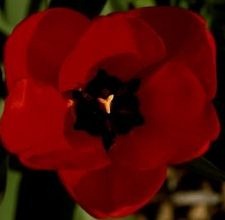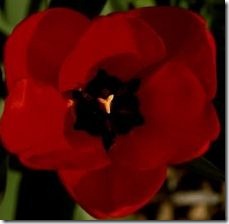Teachers often use the reproductive parts of tulips to demonstrate flower anatomy and plant reproduction. Tulips contains both male and female parts, and are therefore considered dioecious, making them perfect specimens for demonstration. Tulips produce seeds via sexual reproduction when their flowers are pollinated. However, tulips also reproduce asexually by budding or splitting of their bulb roots, and this is the preferred method of tulip propagation.
Pistil
-
The female part, or pistil, of the tulip consists of three fused parts. Three pollen tubes extend upward from the three fused ovaries to form the style, which opens to the external world via the stigma. The stigma also consists of three parts and is a flat, sticky structure that captures pollen for transfer to the ovaries.
Stamen
-
The tulip flower also possesses six male parts, or stamen. Each stamen consists of a long filament topped by an oval anther covered with pollen of different colors.
Seeds
-
Each of the three ovaries of the tulip produces two rows of flat, brown seeds. These seeds likely differ genetically from the mother plant because they were produced through sexual reproduction. Therefore, tulip growers cannot ensure that the seeds will produce flowers that are similar in appearance to the mother plant. Additionally, planted tulip seeds require several years of cultivation before they produce flowers, making them a poor choice for cultivation.
Bulbs
-
Tulip bulbs contain several sections, each of which may sprout a plant. As the plant grows, new bulbs split off from the mother bulb and eventually produce new plants. The genetic makeup of these bulblets is identical to that of the mother plant because they were produced asexually. Each new bulb will produce an identical plant after a short period of cultivation. As a result, growers prefer to propagate tulips using bulbs.


Deprecated: strpos(): Passing null to parameter #1 ($haystack) of type string is deprecated in /home/agriviek8Qv/agriviet.net/public_html/wp-includes/comment-template.php on line 2522